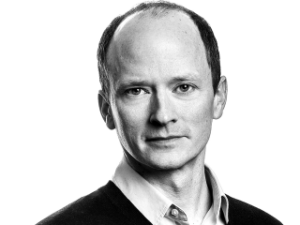
The nervous system groups sets of muscles producing opposing forces on joints, firing the muscles simultaneously to ensure joints aren’t stressed or injured by unbalanced forces, according to a recent Northwestern Medicine study published in Proceedings of the National Academy of the Sciences.
This is a new understanding of the practice known as muscle synergy, which was previously believed only to help improve computational efficiency, according to Matthew Tresch, PhD, professor of Physical Medicine and Rehabilitation, Physiology, and senior author of the study.
“These synergies might be better interpreted in terms of the control of these kind of internal joint variables rather than simplifying task performance,” said Tresch, who is also a professor at the McCormick School of Engineering.
Most movements in the body are the result of several muscles working together, and scientists have been working for decades to understand how and why the brain activates those muscles in a specific pattern.
Grouping sets of muscles together, termed “muscle synergy”, was previously believed to improve efficiency, according to Tresch.
“We believed the nervous system would identify a set of muscles that when activated together, do something useful,” said Tresch, “It would consider them as one variable, so it doesn’t have thousands of variables to control.”
However, Tresch and his collaborators found something different in the current study.
The investigators examined knee extension from the quadriceps muscles in rat models, studying patterns of activation of three muscles attached to the kneecap; one muscle on the outside of the knee, one muscle on the inside, and a third muscle on the front of the knee.
Instead of all three muscles being fired together, like one would expect if the purpose was efficiency, only the two muscles on opposite sides of the knee were fired together. This indicates that the goal of muscle synergy, in this case, is to prevent force imbalance on the patella.
“You need to keep them balanced, otherwise you could cause it to dislocate or you can have stress between patella and femur, which could cause degradation of cartilage,” Tresch said.
This newly understood purpose of muscle synergy indicates just how harmful these force imbalances can be, and Tresch believes that rehabilitation may benefit from greater consideration of these forces.
“In rehabilitation, you usually try to get them back to producing the movement they were doing before the injury,” Tresch said. “Maybe, the best thing after an injury would be to produce something slightly different, compromising between task performance and the stress on the joint.”
In the future, Tresch said he and his collaborators want to explore the specific nerve wiring of muscle synergy, to better understand how the nervous system senses these opposing forces and compensates for them.
“When a patient ruptures their ACL, it’s not just the mechanics that cause deficits afterwards, the brain is rewired,” Tresch said. “If we can start delineating the circuitry responsible for muscle synergy, that might be a way to improve rehabilitation.”
Cristiano Allesandro, PhD, postdoctoral fellow in the Tresch laboratory, was the first author of the study.
This research was supported by National Institutes of Health grant NS086973.






